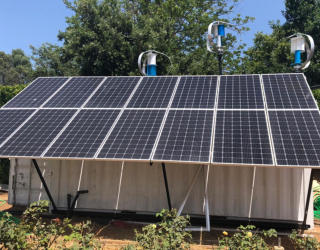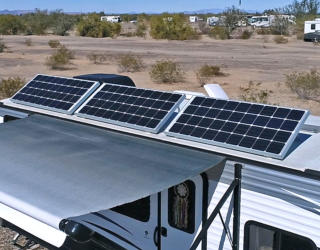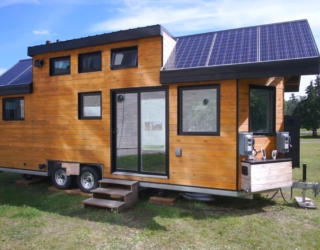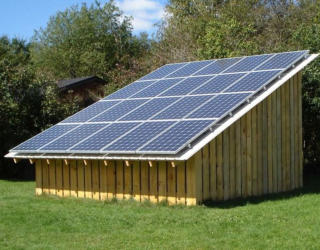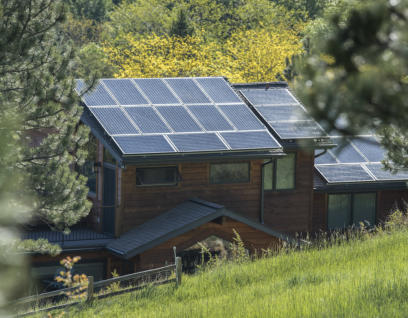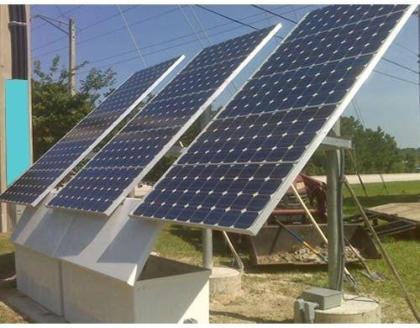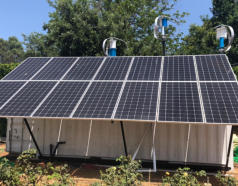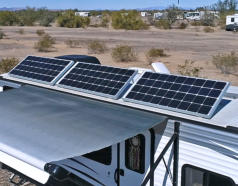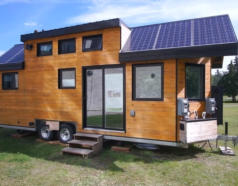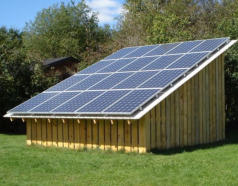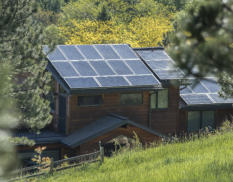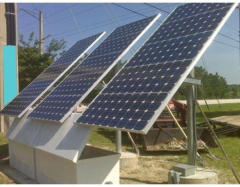WHY GO SOLAR?


Business Hours
Monday - Friday 9 AM – 7 PM
Saturday 10 AM - 9 PM
Sunday Closed
(435) 522-5618
Providing Solar Power Solutions throughout the USA!
566 N Dixie Drive, St George, UT 84770
NECESSITY
Some locations have no access to grid power, or if they do, it is exorbitantly expensive to connect to it. Island homes, hunting camps, remote
cabins, and boats come to mind. In these locations, the options often come down to off-grid solar and/or using a generator. Using just a generator
means turning on the generator every single time you need any power, even just to turn on a small LED light. By installing solar panels with a
battery bank, they don’t need to deal with the generator being on, making noise and burning fuel, every time they need power. A generator is
often a helpful tool to have when living off grid, assisting the solar in keeping the batteries topped off during a string of bad weather, but you can
control when you have the generator on and for how long, preserving your quiet time and fuel.
FINANCIAL
In most locations, installing a grid tie solar system, where you just make some of your power, sell any extra power during the day to the grid, and
buy back any additional power you need, makes good financial sense. By staying connected to the grid, you never have to worry about not making
enough power in bad weather, the grid will sell you any power you need, same as before you went solar. You just buy less power, saving you money.
If you combine this with energy conservation, you will enjoy greatly reduced monthly electric bills. According to GTM Research, as of 2016, the
cost of going solar in twenty states in the US was less expensive than traditional fossil fuel and other sources of electricity. An added bonus to
owning a grid tie solar electric system is that it has been shown to increase your property value, so if you sell the house down the road, you will
likely get your investment back.
ENVIRONMENTAL
Most electricity in the world is made with fossil fuels. There are some exceptions, some places are fortunate to have hydroelectric plants that are
able to make most of their power with a renewable resource. For the rest of us, most of the electricity today comes from coal, oil, or gas fired
electric plants. Solar electricity gives them the ability to use less of the dirty electricity that comes from it, and utilize the clean, renewable
resources from the sun.
Sources of Electricity by 2014:
•
Coal = 39%
•
Natural gas = 27%
•
Nuclear = 19%
•
Hydropower = 6%
•
Other renewables = 7%
•
Biomass = 1.7%
•
Geothermal = 0.4%
•
Solar = 0.4%
•
Wind = 4.4%
•
Petroleum = 1%
•
Other gases < 1%
Source: U.S. Energy Information Administration (EIA)
SELF RELIANCE
The ability to generate your own power, and not be dependent on anyone to sell it to you is very important to some people. Some communities
cannot be beholder to others, so any power they need they must make themselves.
For example, did you know that the Amish are big users of solar? It’s estimated that 80% of the Amish families in the world’s largest Amish
community of Holmes County, Ohio have solar panels. They even install them on their horse drawn buggies to power the required lights.
Small communities throughout the US, such as this one on Star Island in New Hampshire, are beginning to crop up that are choosing to be their
own independent micro-grids, lowering their costs of going solar by buying a larger system that serves multiple homes at once. Some are
completely off-grid, while other remain grid-tied reducing their costs by not having a large battery bank.
Some people want to be prepared for any disasters that may occur that can take down the power grid. They have installed solar to provide them
power to be prepared for the worse, allowing them to have lights, communication, water, and more when all else has failed.
© 2022 Outdoor Power Innovations, Inc. All Rights Reserved.


Business Hours
Monday - Friday 9 AM – 7 PM
Saturday 10 AM - 9 PM
Sunday Closed
(435) 522-5618
Providing Solar Power Solutions through-
out the USA!
566 N Dixie Dr. St George, UT 84770
© 2022 Outdoor Power Innovations, Inc. All Rights Reserved.







WHY GO SOLAR?
NECESSITY
Some locations have no access to grid power, or if
they do, it is exorbitantly expensive to connect to it.
Island homes, hunting camps, remote cabins, and
boats come to mind. In these locations, the options
often come down to off-grid solar and/or using a
generator. Using just a generator means turning on
the generator every single time you need any power,
even just to turn on a small LED light. By installing
solar panels with a battery bank, they don’t need to
deal with the generator being on, making noise and
burning fuel, every time they need power. A generator
is often a helpful tool to have when living off grid,
assisting the solar in keeping the batteries topped off
during a string of bad weather, but you can control
when you have the generator on and for how long,
preserving your quiet time and fuel.
FINANCIAL
In most locations, installing a grid tie solar system,
where you just make some of your power, sell any
extra power during the day to the grid, and buy back
any additional power you need, makes good financial
sense. By staying connected to the grid, you never
have to worry about not making enough power in bad
weather, the grid will sell you any power you need,
same as before you went solar. You just buy less
power, saving you money.
If you combine this with energy conservation, you will
enjoy greatly reduced monthly electric bills. According
to GTM Research, as of 2016, the cost of going solar
in twenty states in the US was less expensive than
traditional fossil fuel and other sources of electricity.
An added bonus to owning a grid tie solar electric
system is that it has been shown to increase your
property value, so if you sell the house down the road,
you will likely get your investment back.
ENVIRONMENTAL
Most electricity in the world is made with fossil fuels.
There are some exceptions, some places are fortunate
to have hydroelectric plants that are able to make
most of their power with a renewable resource. For
the rest of us, most of the electricity today comes
from coal, oil, or gas fired electric plants. Solar
electricity gives them the ability to use less of the dirty
electricity that comes from it, and utilize the clean,
renewable resources from the sun.
Sources of Electricity by 2014:
•
Coal = 39%
•
Natural gas = 27%
•
Nuclear = 19%
•
Hydropower = 6%
•
Other renewables = 7%
•
Biomass = 1.7%
•
Geothermal = 0.4%
•
Solar = 0.4%
•
Wind = 4.4%
•
Petroleum = 1%
•
Other gases < 1%
Source: U.S. Energy Information Administration (EIA)
SELF RELIANCE
The ability to generate your own power, and not be
dependent on anyone to sell it to you is very
important to some people. Some communities cannot
be beholder to others, so any power they need they
must make themselves.
For example, did you know that the Amish are big
users of solar? It’s estimated that 80% of the Amish
families in the world’s largest Amish community of
Holmes County, Ohio have solar panels. They even
install them on their horse drawn buggies to power
the required lights.
Small communities throughout the US, such as this
one on Star Island in New Hampshire, are beginning
to crop up that are choosing to be their own
independent micro-grids, lowering their costs of going
solar by buying a larger system that serves multiple
homes at once. Some are completely off-grid, while
other remain grid-tied reducing their costs by not
having a large battery bank.
Some people want to be prepared for any disasters
that may occur that can take down the power grid.
They have installed solar to provide them power to be
prepared for the worse, allowing them to have lights,
communication, water, and more when all else has
failed.





